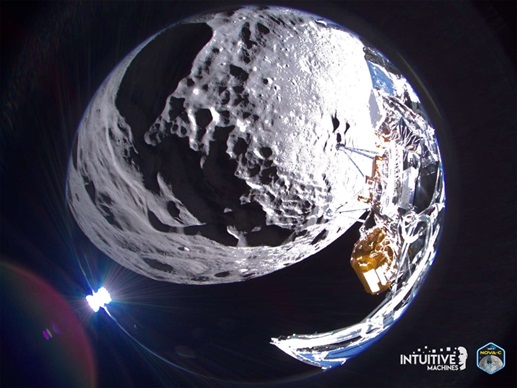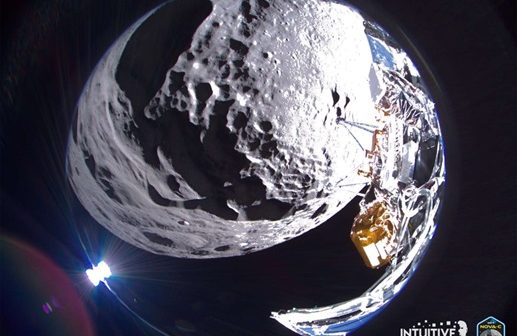
Written by staff writer.
The gloss from Intuitive Machines’ Moon landing late last week wore off slightly over the weekend with news that the Nova-C lander, named the Odysseus Moon lander, had tipped over and was thought to be lying on its side in what amounted to a soft crash landing.
The unmanned spacecraft landed on the Moon on Friday, February 22, 2024, Australian time, touching down at the Malapert A crater near the Moon’s South Pole. It was the first time a commercial space company landed a spacecraft on the lunar surface. It was also the first spacecraft to use methalox propulsion to navigate between the Earth and the Moon.
US President Joe Biden called the IM-1 mission a triumph made possible by American ingenuity, innovation, and curiosity. It was also the first time in over 50 years that the United States had returned to the Moon. NASA paid Intuitive AUD180 million through its Commercial Lunar Payload Services initiative to carry six payloads onboard the spacecraft, which hitched a ride into orbit on a February 13 Falcon 9 launch.
NASA Administrator Bill Nelson said the launch, a “spicy” eight-day journey, and landing “demonstrates the promise of American leadership in space and the power of commercial partnerships.”
While mission control temporarily lost contact with Odysseus as soon as it touched down, that was restored after 15 minutes, and Intuitive Machines said the lander was upright and was starting to send data.
However, 24 hours later, CEO Steve Altemus gave a lengthy media conference. “The vehicle is stable near or at the landing site,” he said. But he also said a landing leg foot got caught on the surface while landing, causing the lander to tip. “We think we descended (vertically) at about six miles per hour while also moving sideways at about two miles per hour. The (six-legged) lander caught a foot on the surface, and it has tipped and is now resting on its side against a rock.”
It was also revealed that Odysseus’ laser rangefinders, which help determine altitude and horizontal velocity, were not working correctly.
Intuitive Machines was criticised for calling the landing a success when it was, in fact, a soft crash landing. As a result, Intuitive shares fell about 30% in late trading on Friday.
However, Altemus says the 4.6-metre-tall and 1.6-metre-wide lander is alive and well. He said mission control in Texas is communicating and commanding the vehicle to download science data. Odysseus also has good telemetry and solar charging.
“The majority of our payloads are all in view, and we are collecting science,” he said. “Yesterday, we thought that we were upright, and the reason was that the tanks were reading gravity on the Moon and fill levels with residuals in the x direction. But that was stale telemetry.”
In addition to the six NASA payloads, there are also six commercial payloads on board. While Altermus says many of the mission’s objectives may be accomplished, the extent of what can be salvaged remains unknown.
Odysseus also has a relatively short shelf life. In less than a week, when the Sun sets over the landing site, the lander, which relies on solar power to generate energy, is programmed to shut down.
Image credit: Intuitive Machines.





